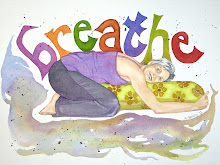This week we began our discussion of the first 2 niyamas or personal observances. The first niyama is Saucha which means purity. This includes both outer and inner purity or cleanliness. I think of it as a sort of washing clean, externally and internally. We are all aware of good hygiene and how the postures and the breathing practices purify and cleanse our internal organs and systems of the body. However, the more subtle aspects of Saucha are the internal cleansing of negative emotions. It is important to cultivate skills to release or diminish negativity but only after we have acknowledged it, feel it and identify it. It is easier, then, to begin to cultivate the opposite emotion. Examples would be anger and forgiveness, envy and abundance etc. It is important to recognize these negative emotions as part of being human and then develop skills to move toward a more positive state of mind. Another aspect of Saucha is keeping our living spaces clean and clear of too much clutter. We all know how much better we feel when we are not immersed in chaos.
The second niyama Santosa means contentment. In my view contentment is intentional not just something we sink into. How does one cultivate contentment? Maybe when we are able to get a clearer and more accurate perception of our lives in any moment. But of course that takes practice. Some days it may seem that nothing is going well. Yet by taking a higher vantage point we may see that we are dwelling on one or two events and stuck in an attitude of despair. Yet, if we instead choose to view our life as a tapestry of light and dark and a myriad of colors and textures, we may get a clearer picture and feel more at peace.
We can also choose to be fully involved in our lives, engaging fully in whatever we are doing. In his book, Flow: The Psychology of Optimal Experience, Mikail Csikszentmihalyi outlines his theory that people are the most happy when they are in a "state of flow " -a state of concentration or complete absorption with the activity or situation at hand.
This theory has stayed with me since reading his book many years ago. I know that when I am fully engaged with what I am doing, in any moment, I am much more content, peaceful and ultimately happy.
Friday, April 29, 2011
Subscribe to:
Post Comments (Atom)


No comments:
Post a Comment